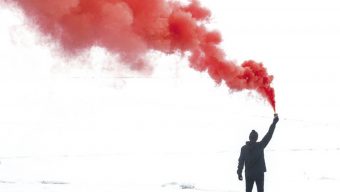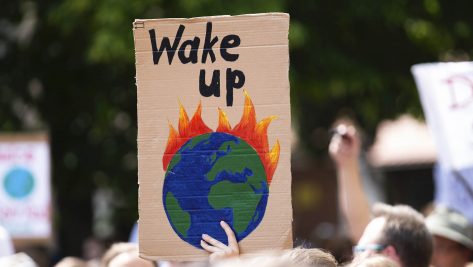April 2025, “Kwibuka 31”, marked the 31st anniversary of the Genocide against the Tutsi in Rwanda. Kwibuka means “to remember.” It is essential to remember this dark chapter of human history: one hundred bloody days in which war crimes, crimes against humanity, and genocide were committed, resulting in the murder of between 800,000 and 1 million Tutsis and moderate Hutus in 1994 – a killing rate four times higher than that observed at the peak of the Nazi Holocaust.
Hate speech and sexual violence were key elements of this genocide. Women were used as a means of humiliation and systematic extermination of the Tutsi through sexual violence. There are discrepancies in the number of total rapes during and after the genocide, but it is estimated that between 250,000 and 500,000 rapes occurred. The International Criminal Tribunal for Rwanda was the first to recognize rape in international criminal law as an act of perpetrating genocide.
Despite this horrifying context, women in Rwanda took the lead in their country’s peacebuilding process. It is known that armed conflicts affect women and children differently; however, recognition of women’s contributions to conflict resolution remains limited. At a time when women’s rights are being rolled back – from Afghanistan to parts of the United States – the experience of Rwanda can help us to remember what inclusive leadership can achieve, even in the aftermath of atrocity.
To begin with, it is important to understand the concept of “peacebuilding.” It was proposed by Johan Galtung, the principal theorist behind peace and conflict studies, in 1976. According to Galtung, peacebuilding involves removing the roots of conflict and establishing peace as a durable social structure. The United Nations later adopted this concept, along with others such as “peacekeeping” and “peacemaking,” within its activities.
Peacebuilding gained recognition through the 1992 report of the former Secretary-General Boutros Boutros-Ghali, “An Agenda for Peace,” where it was defined as “action to identify and support structures which will tend to strengthen and solidify peace in order to avoid a relapse into conflict.” The UN finally linked women’s involvement to the Peace and Security agenda for the first time in 2000 through the adoption of the UN Security Council Resolution 1325 (UNSCR 1325).
Peacebuilding is a complex and long process with three main characteristics: national ownership (citizens and governments assume responsibility for this process); national capacity development (so as not to depend on external assistance); and a common strategy (coordination among all stakeholders toward agreed objectives).
Women should occupy a central role in post-conflict societies, both as decision-makers and peace negotiators, rather than being perceived merely as victims. Their engagement contributes to long-term democratic, economic, and social stability. In Rwanda, the genocide provoked a major demographic shift. Women and girls, including many who returned from exile in neighboring countries, became 70% of the population. They began to assume non-traditional roles across social, political, and economic spheres.
At the social level, Rwandan women were at the forefront of finding homes for orphans and separated children, constructing houses for refugees, and convincing relatives to disassociate themselves from insurgent and rebel activities. Women became visible in professions such as bank tellers, mechanics, and drivers. The increase in women farmers’ leadership in agricultural cooperatives led to a rise in production yield, which has contributed to strengthened national food security.
When peacebuilding incorporates a gender perspective from the outset, its chances of success increase dramatically.
It’s important to note that the mental and physical trauma experienced by women makes their role in the peacebuilding process even more complex. Rwandan women organized self-help groups specifically for women to address psychosocial challenges and share experiences, while promoting interethnic reconciliation. The Rwandan Association of Women in the Media (ARFEM) was established to promote “an informed and resourceful society by empowering women journalists through professional development” and through the 1997 radio program “Women,” they campaigned against wartime rape and accompanied members of Parliament to shelters for survivors of sexual violence in order to raise public awareness.
Women also advocated for reforms to property and inheritance laws that had historically benefited only men. Widows organized movements to fight for equal rights on this matter. Today, women in Rwanda have the legal right to inherit land, and both women and men must be present during property registration. In general, women now face fewer restrictions in accessing resources, with community loans and revenue-generating cooperatives providing important sources of income.
Additionally, in the public sector, women emerged as leaders. Aloisea Inyumba, appointed Minister for Gender and Family Promotion, became the first executive secretary of the National Unity and Reconciliation Commission. She drew the attention of international donors for establishing a nationwide women’s movement based on local former administrative structures, with women-led groups in every neighborhood.
In the legal sphere, post-genocide Rwanda developed a three-tier judicial system: the International Criminal Tribunal for Rwanda, the national system, and the Gacaca courts – a traditional conflict-resolution mechanism where communities elected judges to hear cases of genocide suspects, excluding those accused of planning the genocide. These local courts promoted reconciliation and, for the first time, women served as judges.
Women’s organizations and movements within the Collectifs Pro Femmes Twese Hamwe umbrella organization were instrumental in ensuring that women’s rights and equality principles were included in the 2003 Constitution, approved by referendum. This Constitution set aside 20 of the 80 seats in the Chamber of Deputies for women and mandated that at least 30% of decision-making positions be held by women. For many years, Rwanda has been the only country in the world with a female majority in parliament – and in 2025, 63.75% in the Chamber of Deputies and 53.8% in the Senate.
Despite these achievements, challenges remain. The Rwandan government has adopted two National Action Plans for the implementation of UNSCR 1325 (2009-2012) and (2018-2022). Both conclude that while Rwanda has developed a strong legal framework and gender equality policies, many programs still depend on external aid. Plus, women’s involvement remains concentrated at the local level; greater representation is needed in high-level positions and fields such as security and defense.
I had the opportunity to talk with two experts on this topic: Salimatou Fatty, a lawyer from The Gambia and human rights activist, and, Alice Nsabimana, a Rwandese-Belgian international mediator whose father died in the attack on President Habyarimana’s plane. When discussing peacebuilding and women’s involvement, Salimatou Fatty noted that women are seen as stabilizers – those most willing to start reconciliation processes. However, she emphasized that women’s inclusion in negotiation and decision-making is still limited, and their voices are frequently sidelined. Salimatou also remarked that in many African countries, including her own, women’s participation is largely restricted to the community level. Regarding Rwanda, she observed that the country stands out in Africa for its development in infrastructure and economy, and gender equality – viewing it as a positive step because when something works in one African country, the others in the region try to replicate it.
On the other hand, Alice Nsabimana believes that although Rwanda has succeeded in many areas, justice and reconciliation remain only partially achieved. She argues that “there are many traumas that have not been addressed,” but adds “we don’t talk about ethnicity anymore. We don’t say: I’m Hutu or Tutsi. So, this is something that was banished. And it’s a good thing because what is most important is to be Rwandan.”
At this point, Alice emphasized the role of women in society: “Rwandese women are doing great in Rwanda and outside. Women have continued the role of being the…backbone of the family…they have an important role in the society in Rwanda and in the diaspora, that contributes to the development of the society.” She recalled that her mother, who was 43 in 1994, is the reflection of many other women who had to find livelihoods for their children. Rwandan women have been resilient, as evident in their willingness to take on all kinds of jobs, even those that others did not want.
This is not meant to imply that women can or should build peace on their own. Conversely, Rwanda’s example demonstrates how indispensable women’s active participation is in rebuilding trust and institutions.
The Rwandan genocide left a profound mark on regional and global history due to the speed and scale of the atrocities, the role of media in disseminating hate speech, and the targeted use of sexual violence against women. Following the genocide, women have been essential to the reconstruction of Rwanda’s social fabric. From rebuilding communities to reforming laws and leading political institutions, Rwandan women have helped to shape one of Africa’s most stable and forward-looking nations.
The lessons from Rwanda reveal that women’s leadership and inclusion are not afterthoughts of recovery, but at its foundation. When peacebuilding incorporates a gender perspective from the outset, its chances of success increase dramatically. The process seeks to create conditions for lasting peace and strengthen long-term institutional capacity. In Rwanda, after the genocide, women assumed non-traditional roles that elevated their status, transformed community perceptions, and promoted peace and reconciliation. Amid global conflict and polarization, Rwanda attests that peacebuilding thrives when women are recognized as contributors and architects of the process.
© IE Insights.











